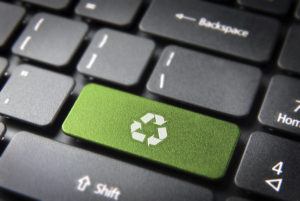CALL US TODAY: (877) 786-3249 x3
Schedule a Strategy Session
In today’s world more and more people are adopting a “green” lifestyle by recycling and reusing. Well, get ready to join the movement, because your business can do the same thing, but with your content!
 It is hard for any business, especially B2B organizations, to find the time to come up with and write new content every month, on top of all the day-to-day work. However, content marketing is an influential and crucial component of online marketing and search engine optimization, primarily acting as a tool to drive customers to your Website and engaging with customers on your Website.
It is hard for any business, especially B2B organizations, to find the time to come up with and write new content every month, on top of all the day-to-day work. However, content marketing is an influential and crucial component of online marketing and search engine optimization, primarily acting as a tool to drive customers to your Website and engaging with customers on your Website.
If your business has already done the work of writing past blog posts, articles, case studies, etc. then don’t let it go to waste, or gather cyber dust in old archives. The solution is recycling!
1. Swap & Trade. Although almost all content types aim at a goal of adding value, giving educational information, and building relationships, all types are different and can be manipulated and tailored as such.
Since all these different types of content pieces have a slightly different goal and angle of writing you can repurpose the bulk of the content into a new type. For instance, you can take an old case study and use the educational information within, rather than the specific client information, and use that to write an article. Or vice versa!
Having all these different types of content makes it easy to take an old content type, change the tone, do some rewording, and have a new content type. Better yet, this also applies to whitepaper and testimonials.
How to Avoid Duplicate Content: With content swapping, rewrite the content. This can be done by breaking up information into bullets, restructuring sentences, or breaking up information into new paragraphs.
2. Get An Upgrade. Content written years before, or even less, may turn out to be outdated in terms of facts and insights. For example, an old article on the benefits of a certain product could now have new benefits or added value. By simply taking an old piece of content and editing it through additions of new insightful information, you will have a new content piece. This means removing the old piece and submitting it with new facts, as a new content piece.
This can also be handled by just adding in a connected service to that product. While the old piece just talked about the product, the new one can inform customers that this product works hand in hand with a specific service. This method requires little to no rewriting! Just add in a few facts, insights, or new chunks of content, and boom, a new piece of content.
How to Avoid Duplicate Content: If you are adding new content to an old content piece, remember to delete the old one.
Articles, case studies and blog posts are not the only kind of content marketing that your business should be partaking in. Email and social media are extremely important when it comes to driving traffic and conversions to your website.
3. Same Frame, Different Picture. Looking back at older social media posts and email newsletters, and their quality analytics, is a great way to see what and how to recycle old content. For example, if a post asking viewers to choose between two pictures got a lot of likes or conversions to your website, you know this structure is a good one to try again. An added bonus is it is easy to reuse! This time around, take the old structure, tone, or content idea, but use different content itself. This can save you time trying to come up with creative promotion text or email display boxes.
4. Jog A Memory. “Remember that time we showed you how our product could do this, well see it in action!” Referencing an old successful email or post is a great way to recycle old content that you know worked. Not only are you retargeting viewers that you know engaged with that post or email previously, but you do not need spend a lot of time coming up with or writing new content. Especially with social media. You can easily retweet or share the old post with some added text. This is also a way to really engage with your customers and build a more informal relationship.
The great thing about recycling old content is that new clients that come to your website have not even seen the old content yet. Most clients are not going to go through your resources and scroll down to a two year old article. Therefore, new customers have not even read this content before, which makes recycling nearly risk free. And for those old customers that may have seen it before, repurposing the content as per the methods above will put to rest any duplicate concerns you may have.
There are many ways to reuse old content that might already be on your website. Not only will this save your business time in coming up with new topics and information, but also the headache of having to write and collaborate. The content is already there, but no one knows. By recycling old material you can save yourself time and still receive the benefits of content marketing and informing your customers.
For a detailed guide one how to create great content that converts, take a look at The Essential Guide to B2B Content Marketing.
